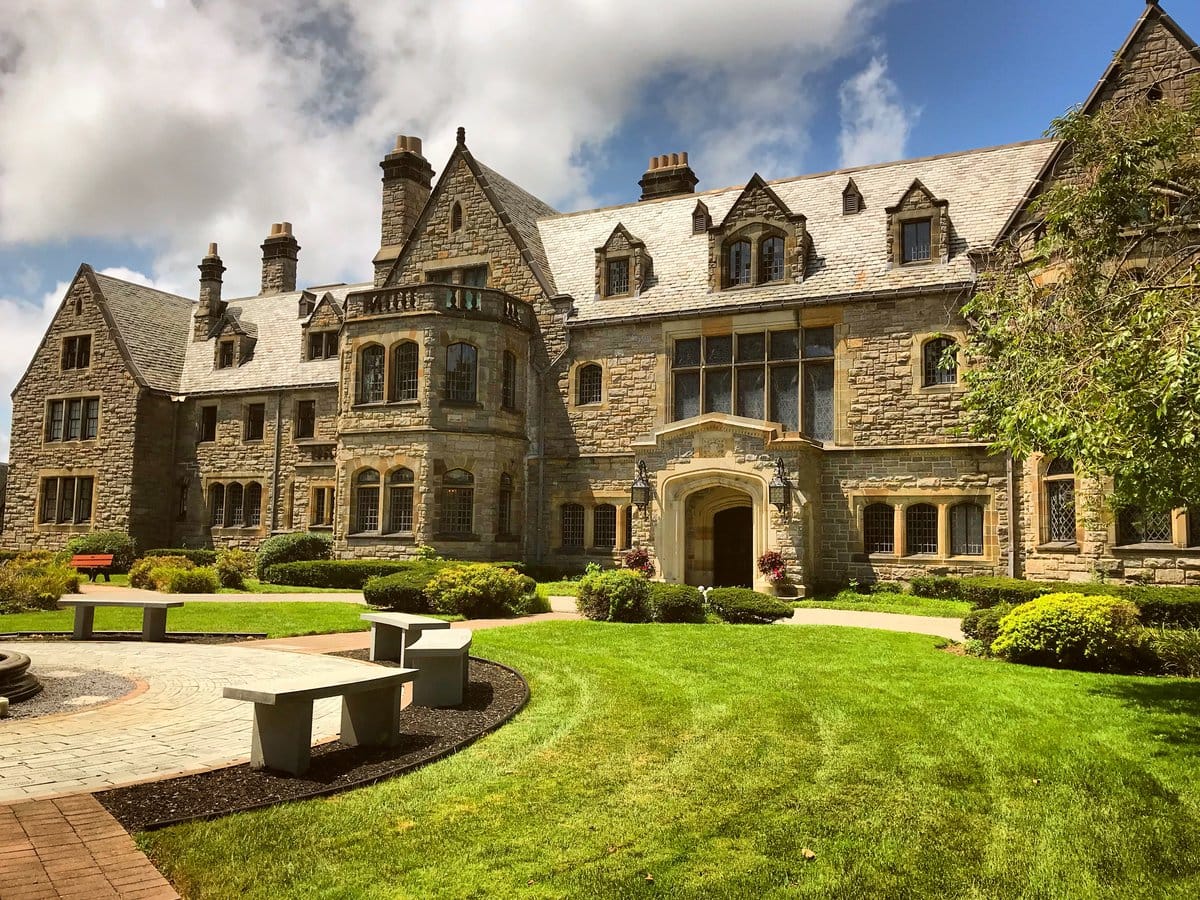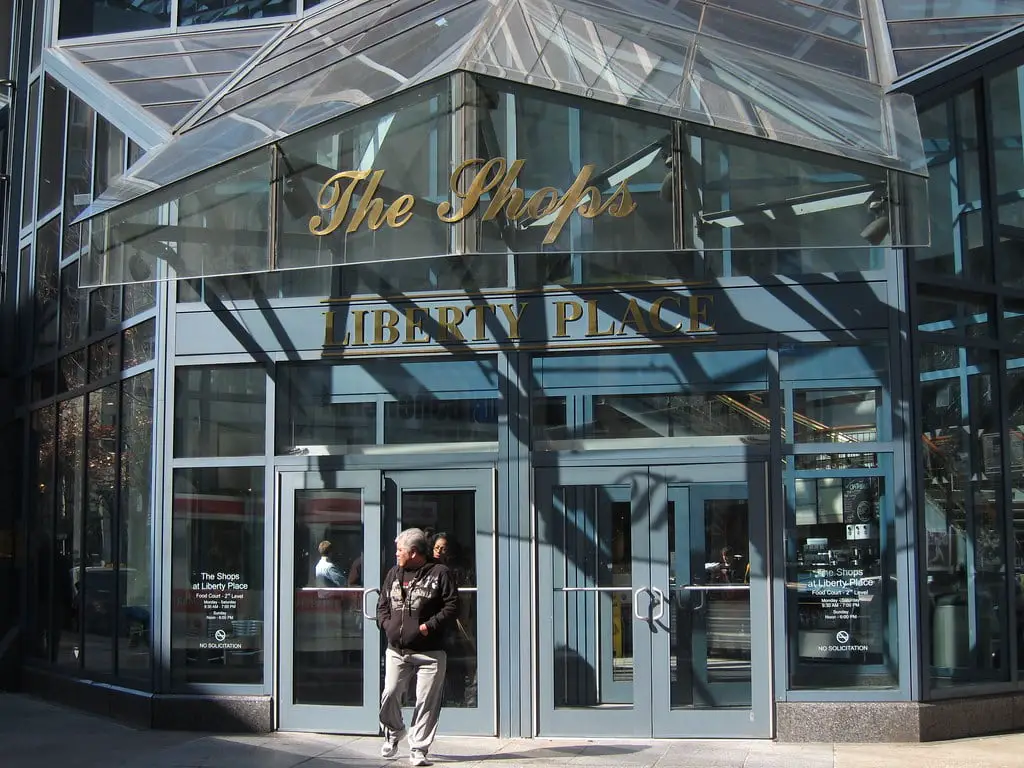Burlington County Prison That Would Outlive Its Time
The door is solid wood, reinforced with iron straps. It has held up for over two centuries.
A key—heavy enough to make your wrist ache—slides into the lock, and with a turn, the past opens up. Inside, the walls rise, thick stone trapping the kind of silence that carries weight.
The air is colder than it should be, untouched by the sun that barely filters through the narrow, barred windows.
Burlington County Prison in Mount Holly, New Jersey, was never meant to crumble.
Built in 1810 and completed a year later, it was designed by Robert Mills—the same architect who would later go on to design the Washington Monument.
Mills had a vision: a prison that was not only secure but structured to “reform” inmates rather than simply punish them.
The result was a three-story fortress of stone, one of the first fireproof buildings in the country.
The structure was meant to be escape-proof. The walls were thick, the windows small, the cells lined in brick.
In an era when many prisons were overcrowded and unsanitary, Mills incorporated ventilation shafts, individual cells, and high ceilings to control airflow.
But the real message was carved above the entrance: “Justice Which, While it Punishes, Would Endeavor to Reform the Offender.” An early attempt at rehabilitation—or at least, the appearance of it.
By the time the first prisoners arrived in 1811, the building was a testament to changing attitudes about crime and punishment.
Solitary confinement was meant to force reflection, a stark contrast to older jails where criminals were packed together in squalor.
Some prisoners were debtors housed in larger cells because they were not considered dangerous.
Others were locked in spaces barely big enough to stretch their legs.
As years passed, the prison did what it was built to do—it held men inside, kept them apart from the world beyond its iron door.
The town around it grew. Businesses opened and closed. A railroad came through. Mount Holly changed, but the prison remained, a solid block of history in the middle of it all.
Even today, visitors searching for things to do near Philadelphia, PA, can walk through its halls, running their fingers over the same stone walls that once trapped generations of inmates.
150 Years of Captivity
At sunrise, the iron gates groaned open, and the daily shuffle began. Guards paced the stone corridors, keys rattling at their belts.
Inmates, some barely awake, lined up for breakfast—bread, black coffee, maybe a piece of salt pork if they were lucky.
The air inside Burlington County Prison never really changed. In the winter, it was damp and biting. In the summer, thick and stale.
From its first prisoner in 1811 to its final inmates in 1965, the prison held thousands.
Some were thieves, some were debtors, some were murderers. A few never made it past the yard, where the wooden scaffold stood ready for public executions.
The last hanging took place in 1906, drawing a crowd from Mount Holly and the surrounding towns.
People arrived early, jostling for the best view. It wasn’t entertainment, exactly—but it wasn’t far from it, either.
As decades passed, the walls of the prison stayed the same, but the number of inmates grew.
Originally built to hold about 40 prisoners, the cells eventually packed in over 100 men at a time.
The sound of iron on iron—doors slamming shut, cuffs clinking—became the rhythm of daily life.
Even the guards knew the place had outlived its original purpose. Small cells, the dim lantern-lit hallways, the echoes that stretched into the night—none of it fit modern correctional standards.
By the 1960s, the town had changed. Factories had come and gone. Businesses lined the High Street.
Mount Holly grew, but the prison stayed locked in another time. Inside, paint peeled from the walls, and the heavy wooden doors swelled with age.
When the county announced its closure in 1965, it wasn’t a question of if—it was when.
The last inmates walked out that November, leaving behind a place that had kept people in for over 150 years.
Some say not all of them left.
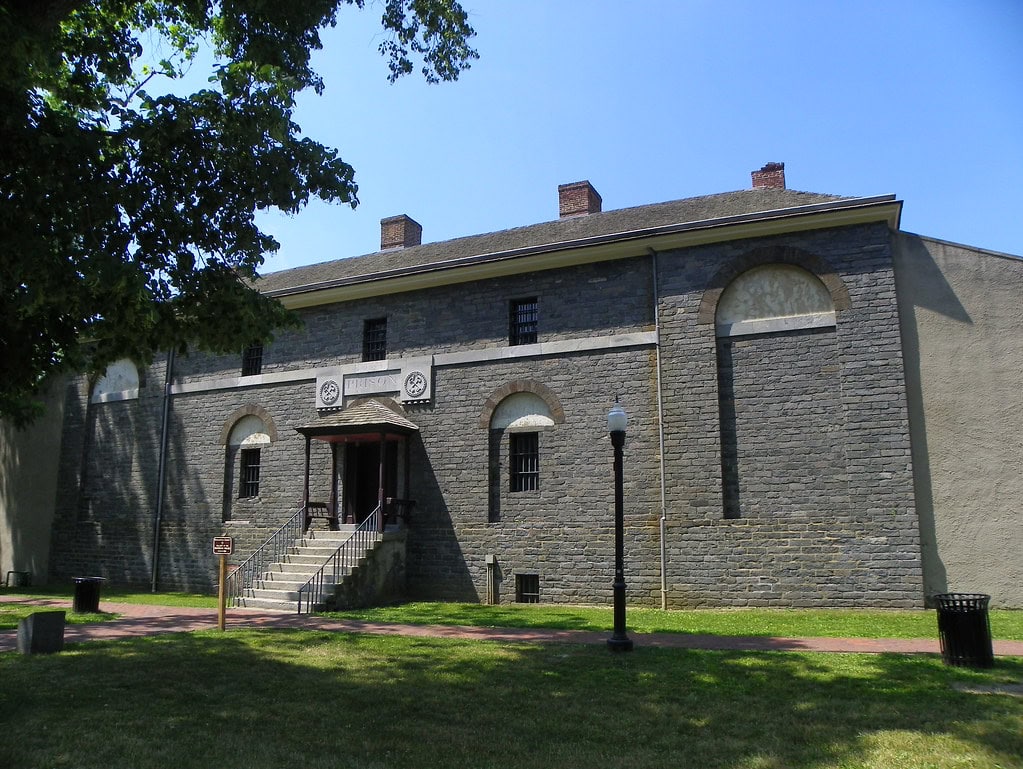
When the Locks Rusted Shut (Closure in 1965)
The final headcount was taken. Cells were emptied. The guards, some of whom had spent decades inside just like the inmates, turned in their keys.
By the end of the day, the building stood silent for the first time since 1811.
Burlington County Prison officially closed on November 23, 1965. The state had deemed it outdated, too cramped, too old to function as a modern facility.
The inmates were transferred elsewhere. The scaffold was long gone, but the walls held onto their history.
Years of graffiti lined the cell doors—names, messages, dates. Some prisoners left carvings in the stone, deep enough to last longer than they did.
Plans to demolish the building never gained traction. Instead, the prison sat empty, its past settling into the walls.
By 1966, discussions about its future began. The county debated options—should they renovate it?
Turn it into offices? Tear it down? Ultimately, preservationists won out, and the building took on a new life.
It became a museum, but the past never left. Visitors described sudden chills, whispers in empty hallways, shadows where there shouldn’t be any.
Some avoided the basement entirely. A figure—tall, dressed in a guard’s uniform—had been spotted standing in the corner, watching.
No records showed a death in that room, but history has gaps.
Today, the prison doors are open again—not for inmates, but for anyone curious enough to walk through.
The lock still turns, the hinges still creak. Time moves forward, but inside those walls, some things never change.
The Haunting That Sticks to the Stone
The basement smells of damp stone and old iron. The air is still thick with the kind of silence that presses in from all sides.
Some visitors make it halfway down the narrow stairs before stopping, an uneasy feeling creeping up their spine.
Others step inside, only to turn around, convinced someone—something—is standing in the corner.
Burlington County Prison has been closed for decades, but people say something stayed behind.
The stories go back years. A tall man in a guard’s uniform, seen watching from the basement. Cold spots in the third-floor cells, where breath turns visible even in the height of summer.
Doors slamming on their own. Footsteps on empty walkways. The museum doesn’t claim it’s haunted, but ghost hunters and visitors leave with stories anyway.
Some blame it on the prison’s past. Over a century and a half, prisoners lived and died here—some by execution, some by time.
The last hanging was in 1906, but people say the weight of those deaths never left the yard.
Paranormal investigators have spent nights locked inside, setting up cameras and audio recorders.
Shadows move where no one is standing. Disembodied voices whisper through the stone corridors. One recording picked up a low, clipped phrase: Get out. No one knows who said it, or when.
The prison’s thick walls were designed to keep people inside. Maybe, in some way, they still do.
The Prison Today – A Living Relic
The doors are open again, but now people walk in by choice.
Burlington County Prison, once a place of confinement, now draws visitors looking for something else—history, curiosity, maybe even a brush with the past.
Today, the prison operates as a museum, open Thursday through Sunday. Original cells remain intact, their wooden doors worn smooth by decades of use.
The heavy locks still work. The iron bars still cast long shadows in the dim light.
Tourists can take self-guided tours through the prison. Audio guides tell the story of the inmates, the design choices, and the final years before the locks rusted shut for good.
Some come for the history. Others come for the ghost hunts held after dark.
The third floor, once reserved for the most dangerous inmates, gets the most attention.
Visitors report sudden temperature drops, the unmistakable sensation of being watched.
Some swear they’ve heard the sound of chains dragging across the floor. No one knows for sure, but the stories keep coming.
The museum doesn’t try to prove or disprove the rumors. The past speaks for itself. Those who want to listen—really listen—just have to step inside.
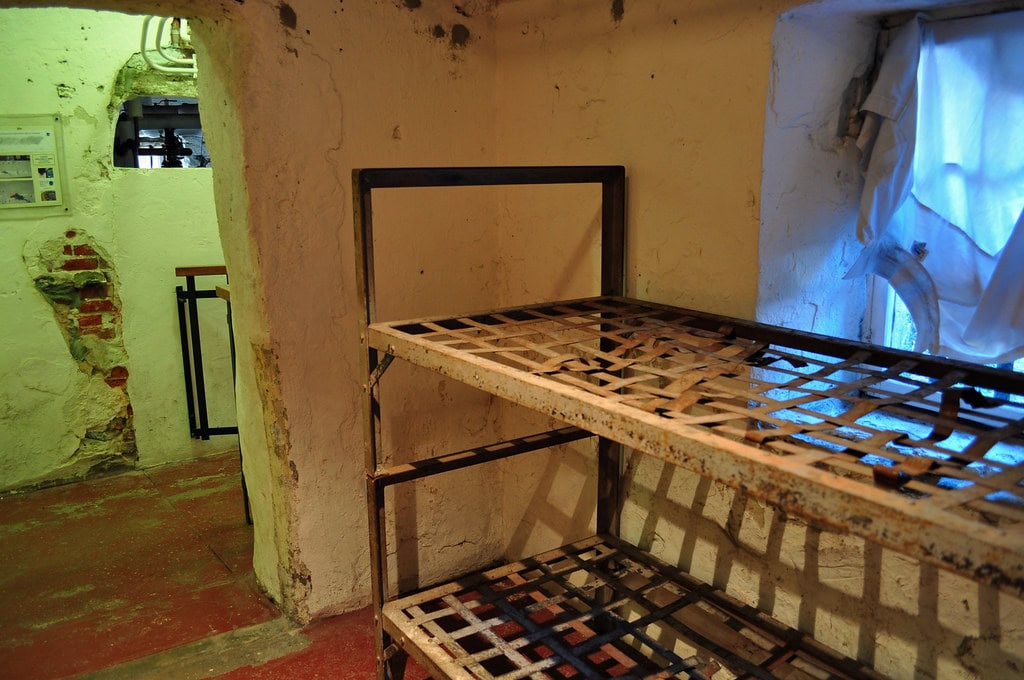
Restoring the Past, One Brick at a Time
The walls of Burlington County Prison Museum have seen it all—centuries of footsteps whispering confessions and hands tracing messages into the stone.
In May 2024, those same walls got a second life. A $2.9 million restoration project wrapped up, bringing the old prison back to what it once was without erasing the marks time had left behind.
The cedar roof, weathered by years of rain and wind, was replaced. The stone masonry, both inside and out, was repaired and cleaned.
But the most delicate work was done inside the cells, where faint carvings and sketches still remained.
Between 1955 and 1965, prisoners left behind drawings—mostly religious imagery, sketched into the walls in pencil or scratched into stone.
Some of it was desperate, some of it hopeful. Either way, it was history, and the restoration team treated it that way.
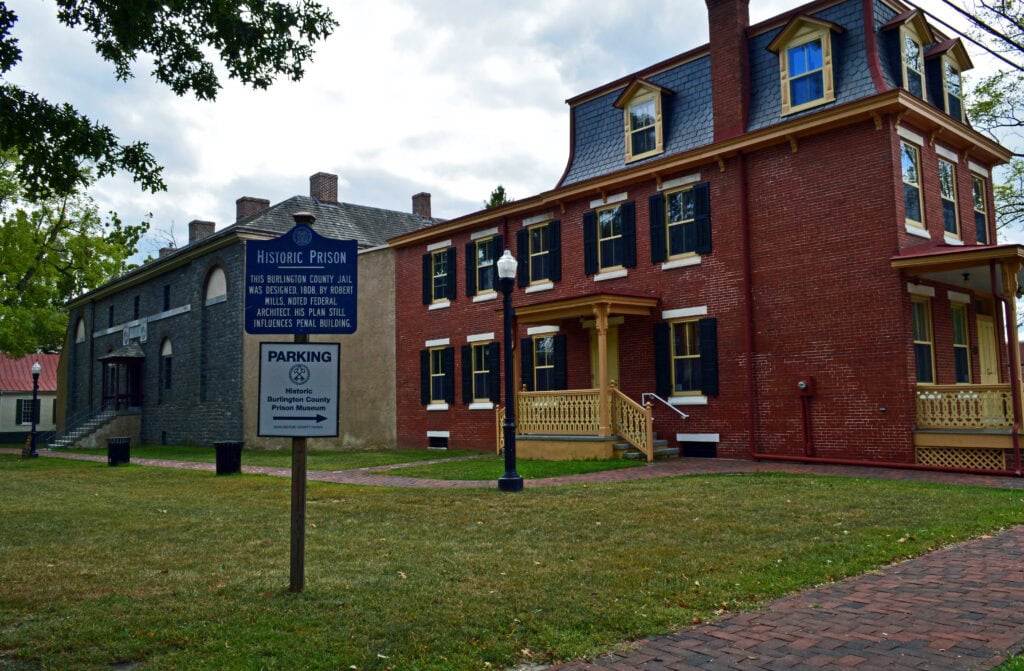
The project was partially funded by the New Jersey Historic Trust, which contributed a $526,500 grant to the work.
The goal wasn’t to modernize the space—it was to ensure its strength for years to come.
The past may be locked in place, but preserving it takes effort.
For visitors walking through today, the changes might not be obvious. The doors are still heavy, the walls still hold a cold that doesn’t quite leave.
But look closely, and you’ll see them—the messages left by inmates, the sketches of crosses and open hands.
The prison is a museum now, but the voices of the past are still right there, waiting to be seen.

